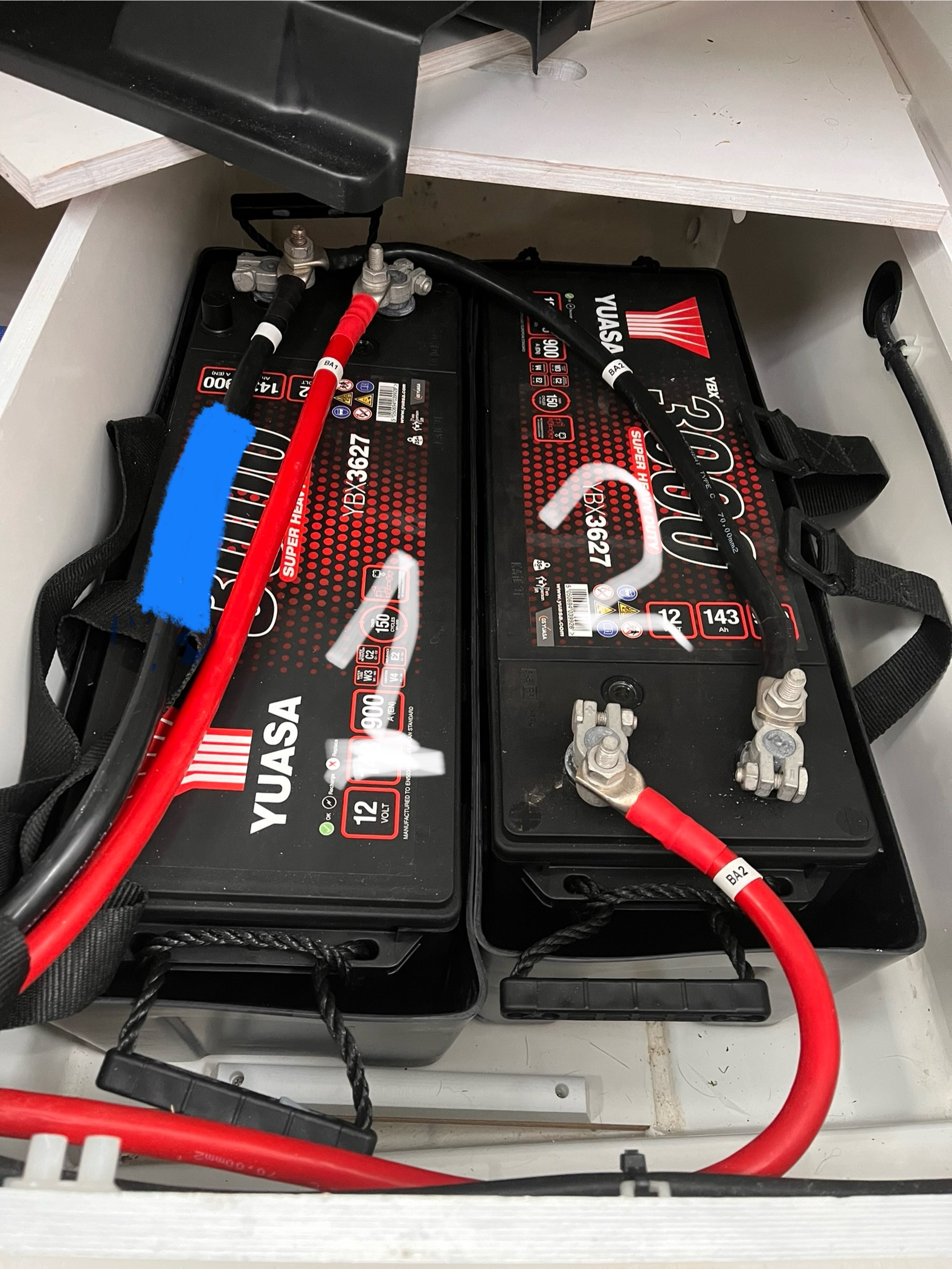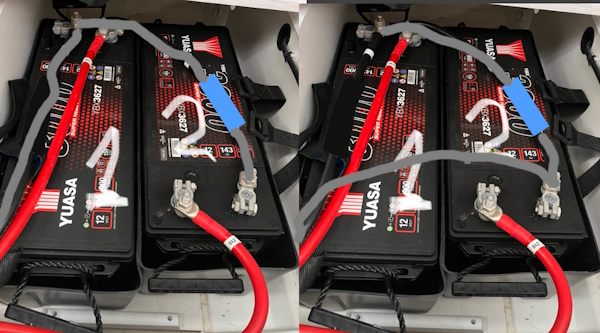Apologies for the very basic question. Is it correct to add the smart shunt at the position shaded blue? Taking the current negative wire and putting it on the load side of the shunt and then connecting a new wire between the other side of the shunt and the negative terminal on batt 1? I then add the small positive/red wires from the shunt to each battery?
Many thanks in advance for any guidance .


